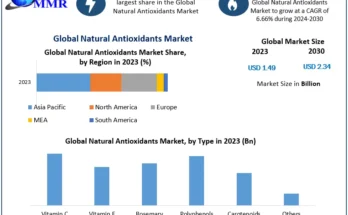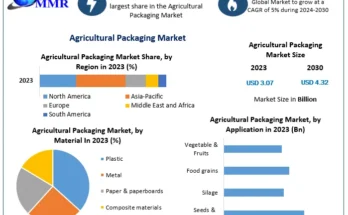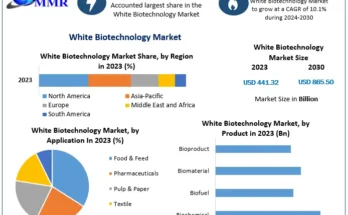Global Hydraulic Fluid Market has valued at USD7.92 billion in 2022 and is anticipated to project robust growth in the forecast period with a CAGR of 2.99% through 2028. Hydraulic fluids encompass a range of lubricants designed for specific components of vehicles and machinery. They serve as the base fluid, utilizing non-compressing force to facilitate both fluid flow and protection. Hydraulic fluids offer superior properties, such as high temperature stability, extended lifespan, enhanced performance compared to ordinary turbine oil, improved viscosity, and more. These fluids find extensive applications across various industries, including oil & gas, chemical manufacturing, and automotive.
They are used in different vehicle systems, such as engine oil, gear oil, and brake fluid, to reduce friction, dissipate heat, and enhance the overall lifecycle of vehicles. Moreover, hydraulic fluids exhibit excellent compatibility with advanced automotive parts and contribute to lower vehicle emissions. Consequently, the increasing automotive sales drive the demand for hydraulic fluids, thereby propelling market growth. However, fluctuations in crude oil prices, which serve as the base material for synthetic lubricants including hydraulic fluids, significantly impact the overall prices of lubricants. With rising oil prices, especially due to substantial oil imports by the U.S. and the growing number of car owners in China, the costs of raw lubricants, including hydraulic fluids, are expected to rise. Furthermore, although there is an overall increase in crude oil production, the demand is projected to decline due to abundant supply, resulting in a drastic decrease in crude oil prices. Hence, the fluctuating prices of raw materials pose a significant challenge to the growth of the global hydraulic fluids market.
Key Market Drivers
Growing Demand of Hydraulic Fluid in Food & Beverage Industry
The global hydraulic fluid market has witnessed a substantial surge in demand, driven notably by the thriving food and beverage industry. This industry heavily relies on efficient and precise machinery to ensure the production, processing, and packaging of products. Hydraulic systems play a crucial role in various stages of the supply chain, from field to plate. They are utilized in food production machinery like extruders, mixers, conveyors, and packaging equipment, providing the necessary force for tasks such as shaping, cutting, molding, and lifting. This ensures a seamless flow of operations. Hydraulic systems offer unparalleled precision and efficiency, which are vital for producing consistent and high-quality food and beverage products.
Download FREE Sample Report @ https://www.techsciresearch.com/sample-report.aspx?cid=2249
They contribute to controlling dough consistency in bakeries and accurately measuring ingredients in beverage production, thereby streamlining processes. The adaptability of hydraulic systems allows manufacturers to customize them to meet the specific requirements of different food and beverage production processes, leading to improved overall productivity. As the industry increasingly embraces automation and advanced manufacturing techniques, the demand for reliable and efficient hydraulic systems continues to grow. Automation not only enhances productivity but also reduces the risk of human errors. In the food and beverage industry, strict adherence to hygiene standards is of utmost importance. Hydraulic systems can be designed using materials that comply with food safety regulations and can be easily cleaned, ensuring industry-standard compliance.
Increasing Demand for Hydraulic Fluid in Automotive Industry
Hydraulic fluids play a crucial role in various automotive applications, ranging from power steering and brake systems to transmission systems. As the automotive sector continues to evolve, the demand for hydraulic fluids is experiencing a significant upsurge, contributing significantly to the growth of the global hydraulic fluid market. Hydraulic fluids are specially formulated liquids that transmit power and enable the smooth functioning of hydraulic systems. These systems are prevalent in vehicles and are essential for various operations that require precise control and force transmission. Hydraulic fluids are a critical component of hydraulic brake systems, facilitating the transfer of force from the brake pedal to the brake calipers.
This allows for efficient braking and the ability to stop the vehicle safely and quickly. Automatic transmission systems rely on hydraulic fluids to engage gears, manage gear shifts, and regulate torque. This ensures seamless gear changes and optimal vehicle performance. While electric and hybrid vehicles are gaining traction, they still rely on hydraulic systems for certain functions such as power steering. As the adoption of electric and hybrid vehicles increases, so does the demand for hydraulic fluids tailored to their unique requirements. Developing economies are witnessing a surge in automotive sales due to rising income levels and urbanization. This growth in vehicle ownership directly fuels the demand for hydraulic fluids in these regions. Regular maintenance and replacement of hydraulic fluids are essential to keep vehicles running smoothly. The aftermarket segment thus contributes significantly to the demand for hydraulic fluids, as existing vehicles require fluid replacements over time.
Increased Demand for Minimization of Fuel Consumption in Machines
Hydraulic fluid, a crucial component of hydraulic systems, is sometimes overlooked as hydraulic systems and components evolve to meet ever-increasing standards for sustainability, productivity, and efficiency. The rising demands on hydraulic fluids, driven by increased operating speeds and pressures, greater electronic usage, enhanced accuracy and precision in operation, and smaller reservoir capacity, cannot be ignored. In temperature-controlled environments, straight-grade fluids prove to be excellent for industrial gear. However, in commercial vehicles and transportable equipment, multigrade hydraulic fluids may be a more suitable choice due to temperature variations and energy-efficiency concerns. The fuel efficiency of hydraulic systems is influenced by factors such as temperature, viscosity, and shear stability of the hydraulic fluid. The growing prevalence and significance of energy-efficient hydraulic fluids are evident. Manufacturers and end users alike are attracted to hydraulic fluids that align with sustainability trends and address economic considerations. For instance, Total Lubricants recently collaborated with Dynavis Technology to introduce a cutting-edge, high-performance hydraulic fluid that offers several notable advantages, including improved fuel efficiency. Field experiments have demonstrated a reduction in fuel consumption by 5 to 30% with the use of these hydraulic fluids. This increasing demand to minimize fuel consumption is driving the growth of the market.
Key Market Challenges
Health and Environmental Problems with Hydraulic Fluid Leakage
Hydraulic fluids exhibit a tendency to adhere to soil particles, despite their inherent degradation in air or soil. Depending on their composition, hydraulic fluids possess diverse chemical characteristics and potential health implications. Some may impact the nervous system, while others can be carcinogenic or pose no harm to flora and fauna. Given their wide range of applications, hydraulic fluids can impact the environment through various means. The primary cause of hydraulic fluid contamination is equipment failure, often resulting in leakage on active construction sites. Cleanup methods commonly involve the use of such equipment, thereby increasing the risk of contamination in areas previously affected. Hydraulic fluids are frequently stored in above or below-ground storage tanks prior to use. Failure of these storage devices can lead to the discharge of larger volumes of hydraulic fluids. The cost and effort required for cleaning up such leaks can be substantial. Another significant source of hydraulic fluid contamination is automobiles and trucks. Nearly every vehicle on the road today utilizes hydraulic braking and steering systems. In the event of a collision, hydraulic fluids, along with other fuels, may leak.
Key Market Trends
Growth in Technological Advancements
In the ever-evolving landscape of today’s industrial world, technological advancements are shaping various sectors, driving them towards unprecedented growth and efficiency. One sector experiencing a transformative shift due to technological innovation is the global hydraulic fluid market. With the increasing focus on environmental consciousness, there has been a surge in demand for biodegradable and environmentally friendly hydraulic fluids. Manufacturers are now dedicated to developing hydraulic fluids with reduced environmental impact, both in terms of production and disposal. Innovations such as biodegradable esters and synthetic-based fluids have gained significant traction, meeting stringent environmental regulations without compromising performance. Moreover, nanotechnology has also made a significant impact on the hydraulic fluid market. The incorporation of nano and micro additives into hydraulic fluids has demonstrated potential in enhancing wear protection, reducing friction, and improving heat transfer within hydraulic systems. These advancements contribute to extended component life and reduced maintenance costs. As industries continue to demand higher performance from hydraulic systems, the need for hydraulic fluids capable of withstanding extreme pressures has become more critical. Cutting-edge formulations with superior lubricity and anti-wear properties are being developed to cater to these demanding applications. Furthermore, the integration of IoT (Internet of Things) technology has paved the way for intelligent hydraulic fluids equipped with sensors that provide real-time data on fluid condition, temperature, pressure, and other essential parameters. This technology enables predictive maintenance, minimizing downtime, and optimizing system performance.
Segmental Insights
Base Oil Insights
In 2022, the Hydraulic Fluid market was dominated by the Mineral Oil and is predicted to continue expanding over the coming years. Mineral oil serves as the predominant base oil for hydraulic fluid production, divided into three distinct groups: Group I, Group II, and Group III. Within Group I, solvent-refined mineral oil takes precedence, commonly employed as the base stock in contemporary hydraulic fluids. For specific purposes, alternative base stocks like silicone oils or propylene glycol may be necessary. Additives play a crucial role in conferring specialized qualities to hydraulic fluids, encompassing anti-erosion agents, corrosion inhibitors, anti-foaming agents, and friction reducers. Group II and Group III oils, classified as hydrocracked type mineral oils, possess higher viscosity compared to Group I. In the ensuing years, the industry is expected to witness a shift from Group I to Group II as more Group I oil production facilities transition or cease operations.
Application Insights
In 2022, the Hydraulic Fluid market was dominated by Construction segment and is predicted to continue expanding over the coming years. According to the Society of Tribologists and Lubrication Engineers (STLE), hydraulic construction equipment comprises 76% of the hydraulic equipment market. Popular construction hydraulic equipment, such as excavators, backhoes, bulldozers, trenchers, loaders, dump trucks, and graders, rely on hydraulic fluids. Ensuring operational efficiency and uninterrupted workflow in challenging construction scenarios can present challenges. Valvoline states that lubricants typically account for 1 to 3% of the maintenance budget for construction equipment. To meet strict deadlines without compromising profitability, construction machinery must maintain reliability and availability. Lubrication plays a crucial role in the maintenance process, despite its small budget allocation, as it can significantly impact performance and project success. According to Oxford Economics, the global construction market is projected to grow by USD 4.5 trillion between 2020 and 2030, reaching USD 15.2 trillion by 2030, with emerging nations accounting for USD 8.9 trillion. Sub-Saharan Africa is expected to experience the highest construction growth, followed by the rising economies of Asia. The United States, India, China, and Indonesia collectively contribute to 58.3% of global construction expansion. Short-term recovery is anticipated to be driven by residential development, while infrastructure spending will fuel medium-term recovery.
Related Reports
Acrylate Market – Growth, Trends [2028], & Analysis
Crosslinking Agent Market [2028] – Forecast & Projected Growth
Table of Content-Hydraulic Fluid Market
- Product Overview
1.1. Market Definition
1.2. Scope of the Market
1.2.1. Markets Covered
1.2.2. Years Considered for Study
1.2.3. Key Market Segmentations
- Research Methodology
2.1. Objective of the Study
2.2. Baseline Methodology
2.3. Key Industry Partners
2.4. Major Association and Secondary Sources
2.5. Forecasting Methodology
2.6. Data Triangulation & Validation
2.7. Assumptions and Limitations
- Executive Summary
3.1. Overview of the Market
3.2. Overview of Key Market Segmentations
3.3. Overview of Key Market Players
3.4. Overview of Key Regions/Countries
3.5. Overview of Market Drivers, Challenges, Trends
- Voice of Customer
- Global Hydraulic Fluid Market Outlook
5.1. Market Size & Forecast
5.1.1. By Value
5.2. Market Share & Forecast
5.2.1. By Base Oil (Mineral Oil, Synthetic oil, Semi-Synthetic Oil, and Bio-Based Oil)
5.2.2. By Application (OEM, Mining Equipment, Construction Equipment, Transportation, Oil & Gas, Metal Production, Food & Beverage and Others)
5.2.3. By Region
5.2.4. By Company (2022)
5.3. Market Map
- North America Hydraulic Fluid Market Outlook
6.1. Market Size & Forecast
6.1.1. By Value
6.2. Market Share & Forecast
6.2.1. By Base Oil
6.2.2. By Application
6.2.3. By Country
6.3. North America: Country Analysis
6.3.1. United States Hydraulic Fluid Market Outlook
6.3.1.1. Market Size & Forecast
6.3.1.1.1. By Value
6.3.1.2. Market Share & Forecast
6.3.1.2.1. By Base Oil
6.3.1.2.2. By Application
6.3.2. Mexico Hydraulic Fluid Market Outlook
6.3.2.1. Market Size & Forecast
6.3.2.2. By Value
6.3.2.3. Market Share & Forecast
6.3.2.3.1. By Base Oil
6.3.2.3.2. By Application
6.3.3. Canada Hydraulic Fluid Market Outlook
6.3.3.1. Market Size & Forecast
6.3.3.2. By Value
6.3.4. Market Share & Forecast
6.3.4.1. By Base Oil
6.3.4.2. By Application
- Europe Hydraulic Fluid Market Outlook
7.1. Market Size & Forecast
7.1.1. By Value
7.2. Market Share & Forecast
7.2.1. By Base Oil
7.2.2. By Application
7.2.3. By Country
7.3. Europe: Country Analysis
7.3.1. France Hydraulic Fluid Market Outlook
7.3.1.1. Market Size & Forecast
7.3.1.2. By Value
7.3.1.3. Market Share & Forecast
7.3.1.3.1. By Base Oil
7.3.1.3.2. By Application
7.3.2. Germany Hydraulic Fluid Market Outlook
7.3.2.1. Market Size & Forecast
7.3.2.1.1.By Value
7.3.2.2. Market Share & Forecast
7.3.2.2.1. By Base Oil
7.3.2.2.2. By Application
7.3.3. United Kingdom Hydraulic Fluid Market Outlook
7.3.3.1. Market Size & Forecast
7.3.3.1.1. By Value
7.3.3.2. Market Share & Forecast
7.3.3.2.1. By Base Oil
7.3.3.2.2. By Application
7.3.4. Italy Hydraulic Fluid Market Outlook
7.3.4.1. Market Size & Forecast
7.3.4.1.1. By Value
7.3.4.2. Market Share & Forecast
7.3.4.2.1. By Base Oil
7.3.4.2.2. By Application
7.3.5. Spain Hydraulic Fluid Market Outlook
7.3.5.1. Market Size & Forecast
7.3.5.1.1. By Value
7.3.5.2. Market Share & Forecast
7.3.5.2.1. By Base Oil
7.3.5.2.2. By Application
- Asia-Pacific Hydraulic Fluid Market Outlook
8.1. Market Size & Forecast
8.1.1. By Value
8.2. Market Share & Forecast
8.2.1. By Base Oil
8.2.2. By Application
8.2.3. By Country
8.3. Asia-Pacific: Country Analysis
8.3.1. China Hydraulic Fluid Market Outlook
8.3.1.1. Market Size & Forecast
8.3.1.1.1. By Value
8.3.1.2. Market Share & Forecast
8.3.1.2.1. By Base Oil
8.3.1.2.2. By Application
8.3.2. India Hydraulic Fluid Market Outlook
8.3.2.1. Market Size & Forecast
8.3.2.1.1. By Value
8.3.2.2. Market Share & Forecast
8.3.2.2.1. By Base Oil
8.3.2.2.2. By Application
8.3.3. South Korea Hydraulic Fluid Market Outlook
8.3.3.1. Market Size & Forecast
8.3.3.1.1. By Value
8.3.3.2. Market Share & Forecast
8.3.3.2.1. By Base Oil
8.3.3.2.2. By Application
8.3.4. Japan Hydraulic Fluid Market Outlook
8.3.4.1. Market Size & Forecast
8.3.4.1.1. By Value
8.3.4.2. Market Share & Forecast
8.3.4.2.1. By Base Oil
8.3.4.2.2. By Application
8.3.5. Australia Hydraulic Fluid Market Outlook
8.3.5.1. Market Size & Forecast
8.3.5.1.1. By Value
8.3.5.2. Market Share & Forecast
8.3.5.2.1. By Base Oil
8.3.5.2.2. By Application
- South America Hydraulic Fluid Market Outlook
9.1. Market Size & Forecast
9.1.1. By Value
9.2. Market Share & Forecast
9.2.1. By Base Oil
9.2.2. By Application
9.2.3. By Country
9.3. South America: Country Analysis
9.3.1. Brazil Hydraulic Fluid Market Outlook
9.3.1.1. Market Size & Forecast
9.3.1.1.1. By Value
9.3.1.2. Market Share & Forecast
9.3.1.2.1. By Base Oil
9.3.1.2.2. By Application
9.3.2. Argentina Hydraulic Fluid Market Outlook
9.3.2.1. Market Size & Forecast
9.3.2.1.1. By Value
9.3.2.2. Market Share & Forecast
9.3.2.2.1. By Base Oil
9.3.2.2.2. By Application
9.3.3. Colombia Hydraulic Fluid Market Outlook
9.3.3.1. Market Size & Forecast
9.3.3.1.1. By Value
9.3.3.2. Market Share & Forecast
9.3.3.2.1. By Base Oil
9.3.3.2.2. By Application




